Beijing
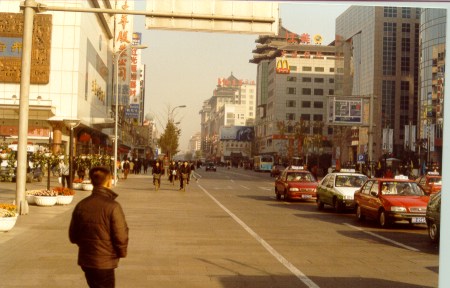
On the main shopping district in downtown Beijing. A very modern section of the city
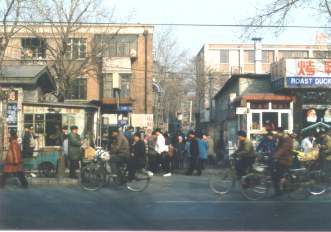
A more typical street in Beijing.
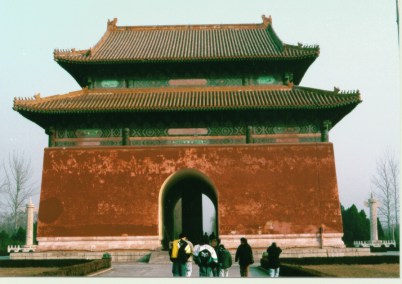
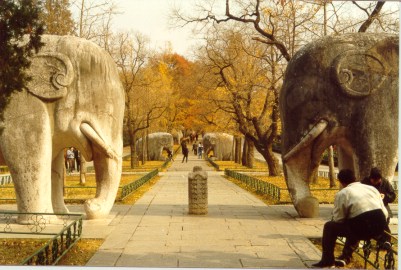
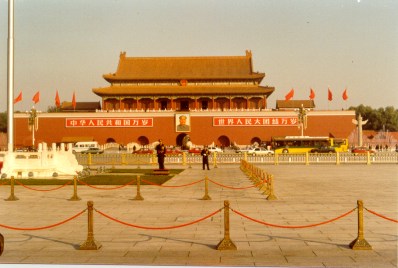
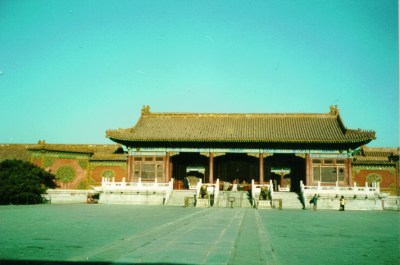
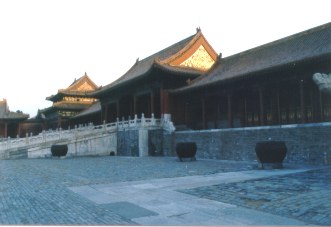
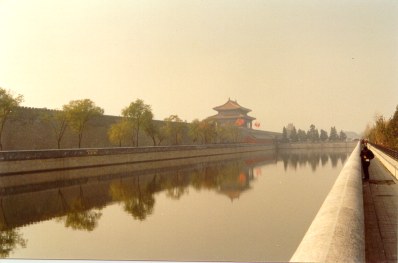
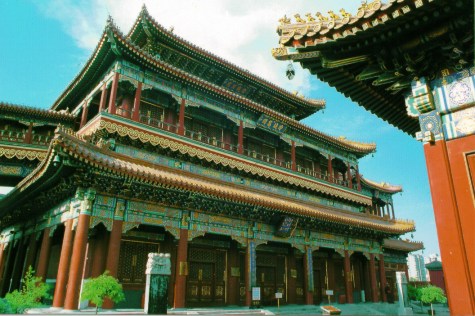
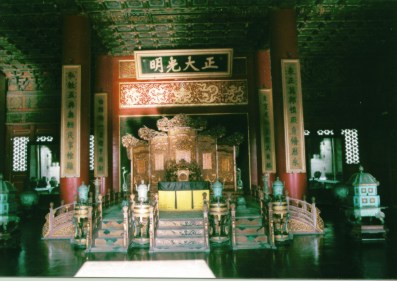
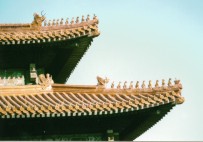
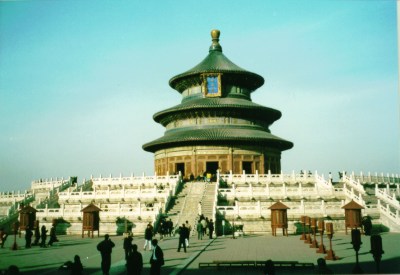


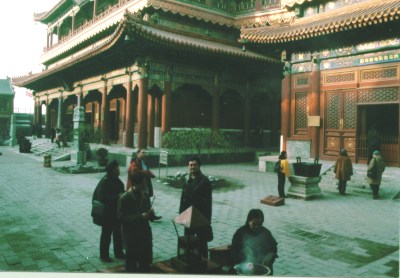
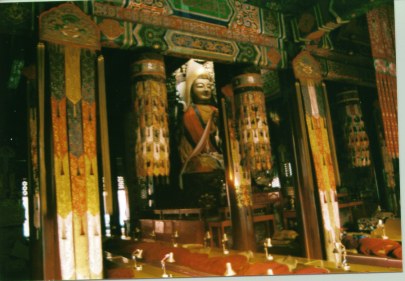
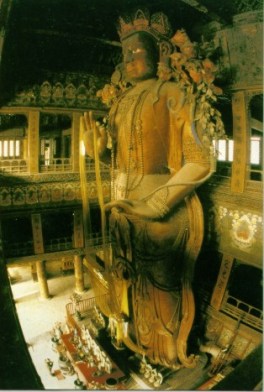
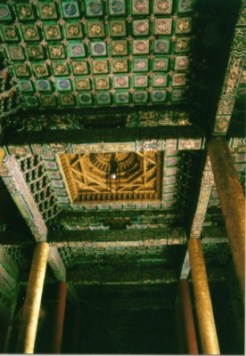
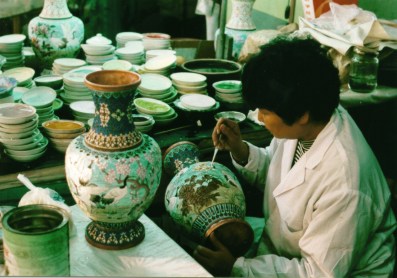
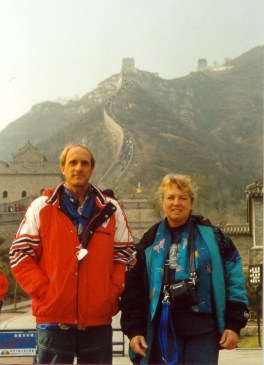
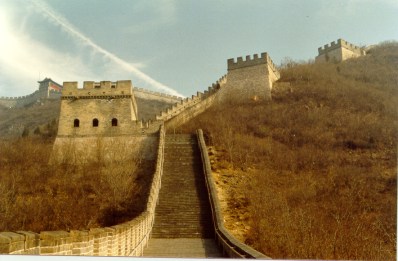
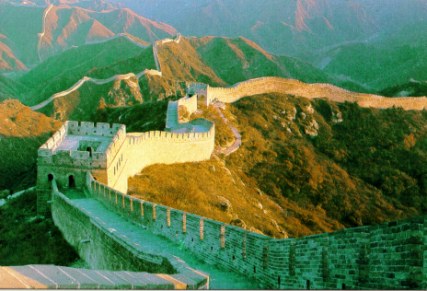
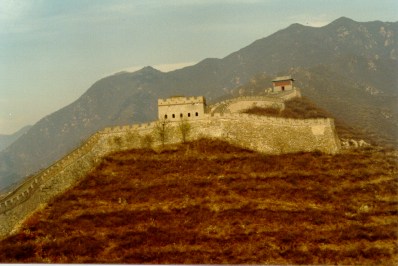
Beijing |
|
 On the main shopping district in downtown Beijing. A very modern section of the city |
 A more typical street in Beijing. |
 |
 |
| Entrance gate to one of the Ming dynasty tombs. | Walkway to one of the Ming tombs. The animal figures are here to help the emperor in the next life. |
 |
 |
| South entrance to the forbidden city. This was the seat of government during the Ming and Qing dynasties. As seen from Tinamem square. | One of the many inner gates in the forbidden city. As you pass each gate you are entering a more select area till you reach throne rooms and then old living quarters |
 |
 |
| Some of the buildings inside the forbidden city. The large iron jars are to store water to use in case of fire. | Part of the moat that surrounded the forbidden city for defense in old times. |
 |
 |
| There are many very intricate buildings in the forbidden city with incredible woodwork, tile and painting. | The main throne room in the forbidden city. |
 |
 |
| Roofs in china on important buildings and temples have upturned roof eaves. This they believe will keep demons from sliding down the roof. The animal figures are an added protection. | This is the temple of heaven where the emperors would pray for good harvests. The square base represents the earth and the round building on top heaven. It is also constructed so everything is in sets of 9 - a very lucky number in China |
 |
 |
| The summer place where the rulers would go to escape the summer heat of Beijing | This is a boat made entirely out of marble that the rulers would use at the summer place. |

|
 |
| These are some of the buildings at the lama temple in Beijing, and the room where the buddhists pray. | This is the main statue of buddha at the Lama temple. It is a huge wooden statue carved from one massive tree. |
 |
 |
| This is some of the detailed work on the ceilings you find in the temples. | This lady is making Cloisome. Which starts as a copper pot. Then copper wires are added to frame in the design which are filled with ceramic type power. Then the pot or whatever is fired and polished. |
 |

|
| These are some pictures of the great wall of China. It is very steep in places and others less so. There are guard posts often as you can see. It runs from the ocean to well into the Gobi desert. The great wall was started by the first emperor in 200 B.C. as a defense against mongols. This first version was mostly tamped earth mixed with sticky rice. The walls of China were rebuilt several times by suceeding emperors. There is not one continuous wall, but a series of walls. The walls present now are from the Ming dynasty which were built in the 13th century. The walls follow the contours of the land. It varies in height from 10 feet to 100 feet and are about 4000 miles long. |  |
Xian |
|
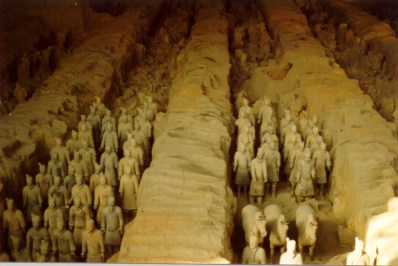 |
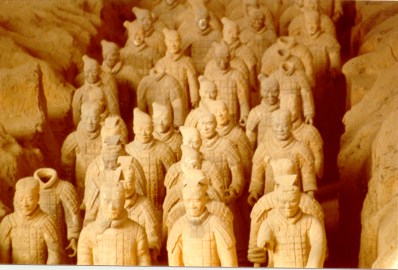 |
| These are the terra cotta warriors built and entombed by the first emperor to unify China in 221 B.C. or the Qin dynasty. Xi'an was home to many of the early rulers in China and is in the center of the lowlands near the Yellow river. It is a medium city in China which means about 6 million people. | He built this army to lead in the after life. They only discovered it in the 1970's. They continue to find more though many are damaged. They have yet to find his burial chamber. They were formed of clay, fired and then glazed in bright colors which are largely lost over the many years underground. |
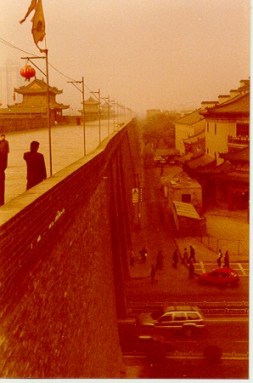 |
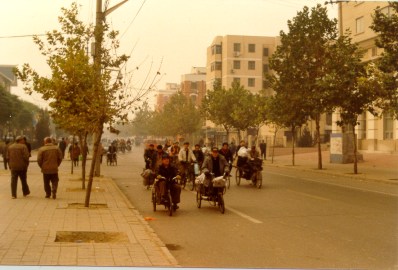 |
| Xi'an has an intact city wall built many years ago with a moat also around the outside for defense. | The streets are full of a mix of cars, buses, bicycles and motorized scooters. |
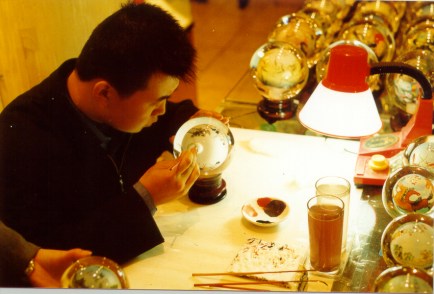 |
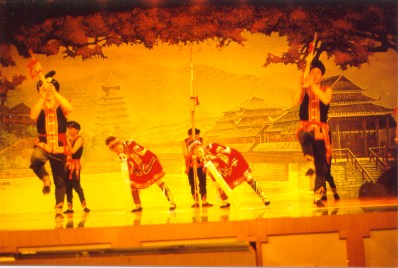 |
| Bottle painting is done by painting the inside of a bottle with small brushes with bent tips. Its amazing to watch and see the final result. | We saw a cultural minority show. China has 56 cultural groups. The Han Chinese make up 99% of the population. The 1% left or 55 cultural group occupy about 60% of China's landmass on the south, west and north edges. This show showed us some of the diversity of these groups. |
Guilin |
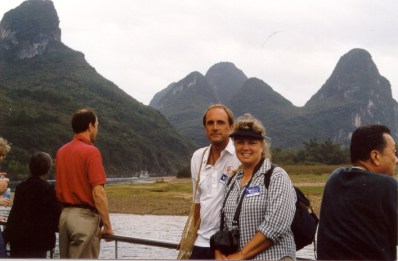 |
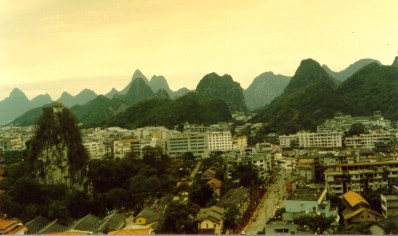 |
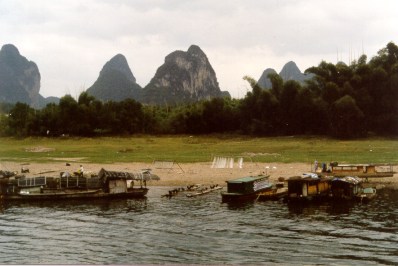 |
| Guilin is a small city in the south of China. Small in china means almost 1 million. The topography is very unique in this area with many narrow peaked hills. Chinese consider it the most beautiful area of China and many paintings are done of this area. | We went on a river trip in Guilin and the scenery just kept getting better. Among the hills there are groves of bamboo, trees and this river home to fisherman, lots of domestic ducks and water buffulo. |
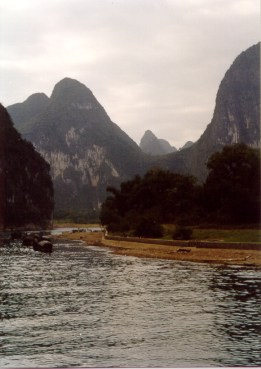 |
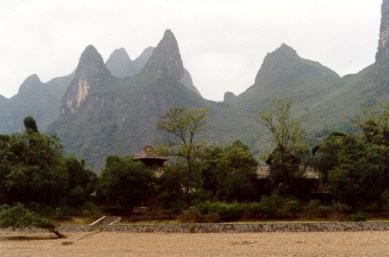 |
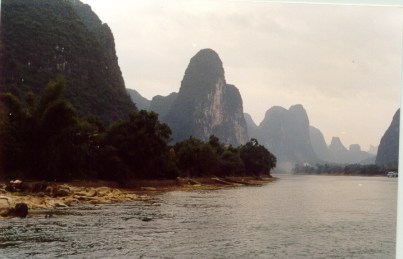 |
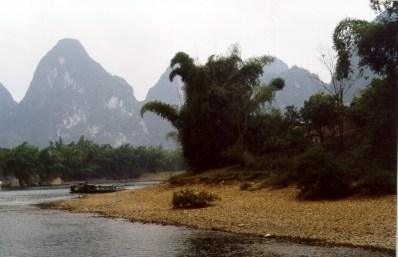 |
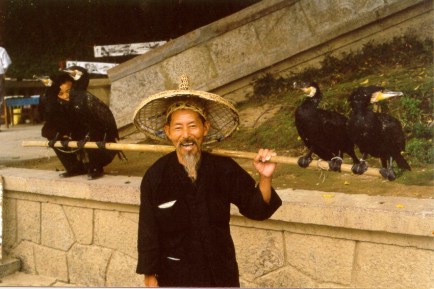 |
 |
| This is a fisherman with his comerants. These are birds that naturally catch fish. The Chinese have domesticated them long ago. They tie a string around the birds necks so they can't swallow the fish and bring them back to the fisherman | There is much boat travel of many kinds on this river. The smallest of which are these bamboo boats made of simply lashing a number of bamboo together. |
Suzhow |
|
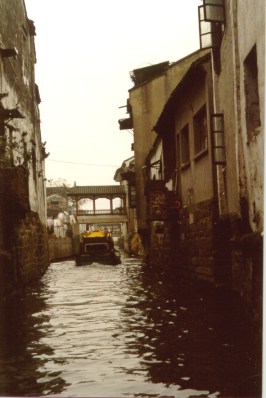 |
 |
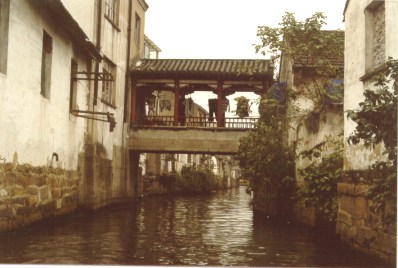 |
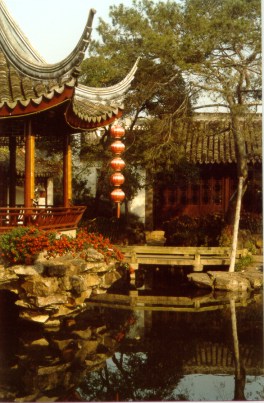 |
| Suzhow is a city by the coast of China. It is called the venice of the east since canals form the roads in the old section of the town. It was and is the silk center of China and as such was quite prosperous. Rich traders set up fancy well organized gardens in there houses as these pictures show. | 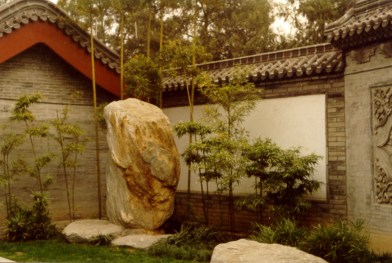 |
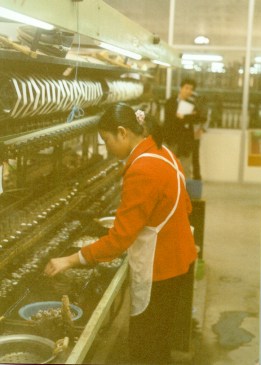 |
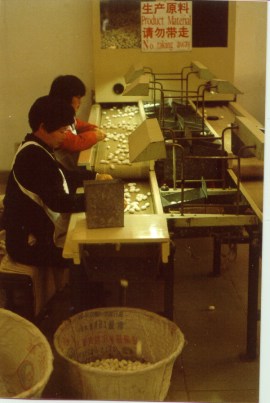 |
| Silk is from the silk worm caterpillar cocoon. Silk worms are raised by many farmers in the area. They raise them inside, bringing there only food, mulberry leaves, to them on trays. When the cocoons are formed, 10 % are let live for the future and the rest sent to the silk factories. | Single pupa cocoons are used to make silk thread and double pupa cocoons are used to make comforters and insulation. The cocoons are boiled to release the glue the caterpillar uses and here you see they are unwound to form the thread. Eight silk threads are wound together to form one thread used in weaving. |
| Between cities we got to see the country land which is made up of many small farms. The population is huge in China and concentrated on only a small part of China. Each farm in this coastal area is less than an acre in size. They are intensely farms by hand. The farms get 3 crops a year, one of which must be a staple grain like wheat, corn or rice which most is sold to the government. The others are up to the farmer. | 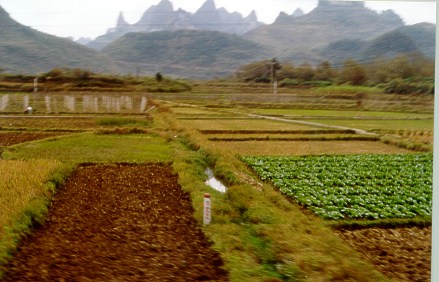 |
| Streets in most China's cities are sweep and cleaned by hand every day. With China's huge population many jobs are done in a labor intensive way to keep people employed. |  |